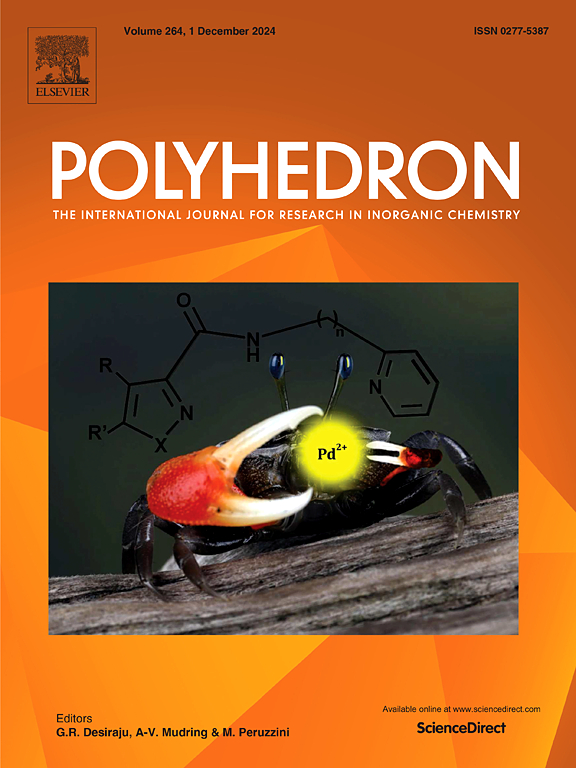Synthesis, characterization, DNA, BSA, antimicrobial, antioxidant and molecular docking studies of gadolinium(III) based complexes
IF 2.4
3区 化学
Q2 CHEMISTRY, INORGANIC & NUCLEAR
引用次数: 0
Abstract
The present study reports the synthesis of two new gadolinium-metal-based complexes with mixed ligands, [Gd(L1)2(py)(H2O)3] (C1) and [Gd (L2)2(phen)(H2O)2] (C2), where L1 represents 3-(4 cyanophenyl) acrylate and L2 as 3-(4 fluorophenyl) acrylate. The complexes were characterized by various analytical techniques including FT-IR, PXRD, TGA, DSC, SEM and EDX to determine structural elucidation, binding mode, crystallinity, thermal stability, morphology and elemental composition, respectively. The synthesized complexes were tested for DNA (salmon sperm) and BSA interaction studies to infer their antitumor potential. The binding constants obtained for C1 and C2 with SS DNA were 3.03 × 104 and 3.2 × 104 while with BSA observed as 1.59 × 105 and 1.22 × 105, respectively. In vitro antimicrobial potential of both complexes was determined against various bacterial and fungal strains. Experimental results showed complex C2 is more active than C1 against all selected bacterial strains and showed higher antibacterial potential against E. coli with a zone of inhibition (ZOI) of 35 mm. The antibacterial potential of C2 was further investigated by calculating the MIC (IC50) value. MIC of complex C2 was assessed using visual inspection (turbidity) and spectrophotometric assay at 600 nm. The findings of the spectrophotometric approach have greater sensitivity than the standard disc diffusion assays. The molecular docking studies were conducted to validate further and compare the findings of experimental results which exhibited that complex C2 has an excellent binding capacity with the target protein (5CDQ) with free binding energy −12.23 kcal/mol. Antioxidant potentials of the complexes were assessed using phosphomolybdenum assay, which demonstrated that complex C2 exhibits higher antioxidant activity than complex C1.

求助全文
约1分钟内获得全文
求助全文
来源期刊

Polyhedron
化学-晶体学
CiteScore
4.90
自引率
7.70%
发文量
515
审稿时长
2 months
期刊介绍:
Polyhedron publishes original, fundamental, experimental and theoretical work of the highest quality in all the major areas of inorganic chemistry. This includes synthetic chemistry, coordination chemistry, organometallic chemistry, bioinorganic chemistry, and solid-state and materials chemistry.
Papers should be significant pieces of work, and all new compounds must be appropriately characterized. The inclusion of single-crystal X-ray structural data is strongly encouraged, but papers reporting only the X-ray structure determination of a single compound will usually not be considered. Papers on solid-state or materials chemistry will be expected to have a significant molecular chemistry component (such as the synthesis and characterization of the molecular precursors and/or a systematic study of the use of different precursors or reaction conditions) or demonstrate a cutting-edge application (for example inorganic materials for energy applications). Papers dealing only with stability constants are not considered.
 求助内容:
求助内容: 应助结果提醒方式:
应助结果提醒方式:


